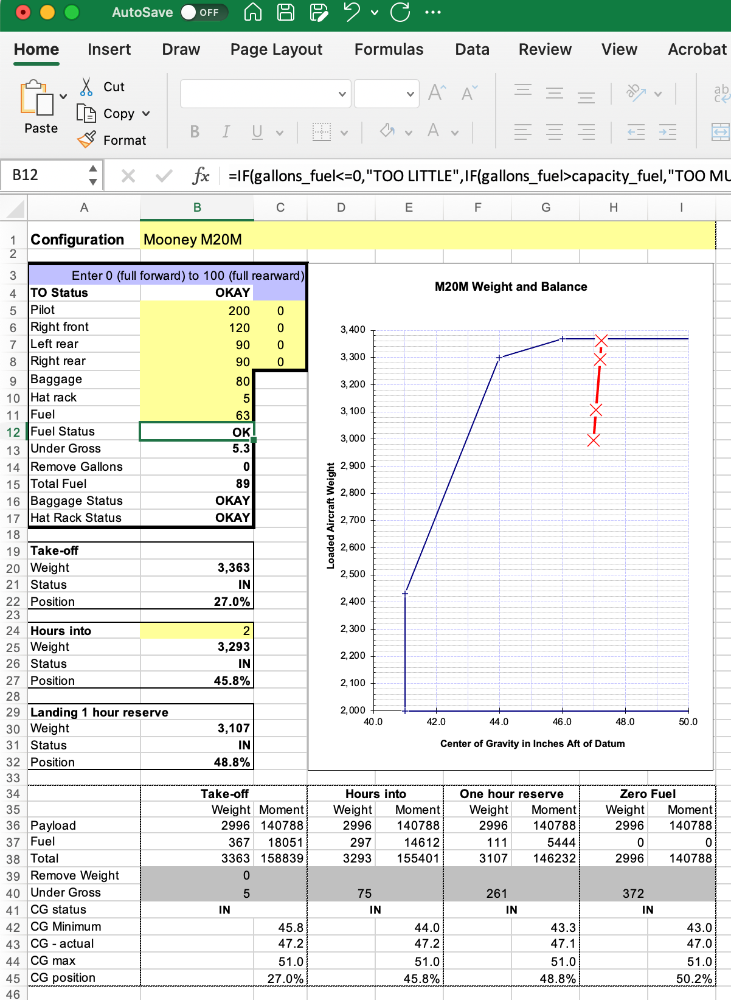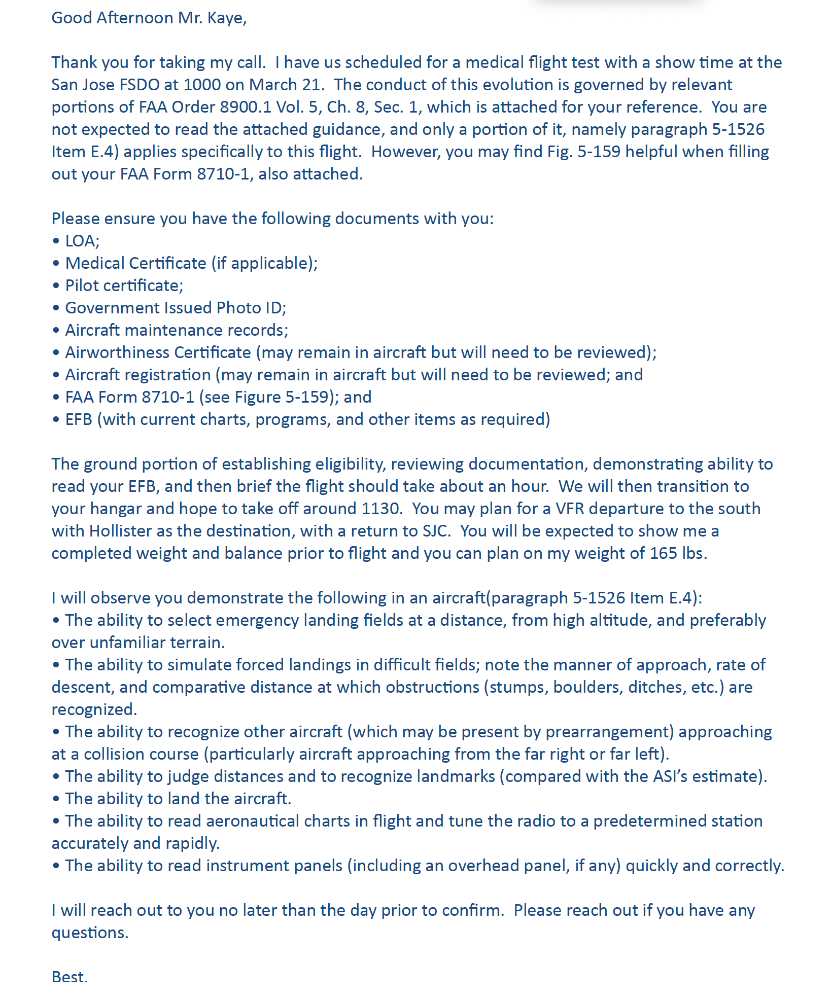-
Posts
2,615 -
Joined
-
Last visited
-
Days Won
33
Content Type
Profiles
Forums
Blogs
Gallery
Downloads
Media Demo
Events
Everything posted by donkaye
-
For the first time I finally have a transitioning student who has an IFD 540, so I thought it prudent to learn the unit. I've watched all 3 1½ hour videos that Avidyne put out last year. In some regards additional information is available as compared to the Garmin GPSs. Maybe if I had 50 hours with the unit on a couple of long cross country flights I would get to appreciate it. In many regards it operates a lot like the GNS 480. Its menu structure is totally different from Garmin's. I never really liked that unit, but did several instrument ratings with students who had it. While they say the tabbed menus are easier to use, I think it is a lot more difficult to get around than Garmin's structure. Frankly, there is too much information on the map page, and the flight plan page at the moment just isn't comfortable for me to use. Over time maybe my attitude will change, but for now for its ease of use, I'm still definitely a Garmin person.
-
My servos are all 5G9 series. Garmin says you don't even have to look up a serial number if yours start with that sequence. According to Garmin they all need replacement. I'm reluctant to do it now, since for the past 3 years they have all worked perfectly. With the number on the bad list, this is going to hurt them a lot.
-

Flying with oxygen : recommended also for 20.000 plus feet?
donkaye replied to Raffi's topic in General Mooney Talk
I tried all settings. Have others been able to get 96% saturation on the lower settings, or for that matter any setting? -

Flying with oxygen : recommended also for 20.000 plus feet?
donkaye replied to Raffi's topic in General Mooney Talk
Again for balance: O2D2 = A big thumbs downs for me. I want to know how anyone using it is getting any more than a 93% O2 saturation with it. I certainly couldn't and I tried. -
Unfortunately, each plane has their own idiosyncrasies.
-
You'd rather your wife not fly with you forever, and oscillate with the plane yourself than give up the plane for a month and get the problem resolved?
-
Anyone who tries to talk you out of the yaw damper hasn't been in turbulence significant enough to warrant one. I have. The yaw damper is worth the extra cost, and it's not just because I have one. I had one afternoon flight between Lordsburg, NM and Demming, NM where even with the yaw damper the flight was rough with moderate to severe turbulence. Without the yaw damper it would have been a lot worse. Even on a normal flight there is comfort in knowing it is there to soften the blows.
-

Flying with oxygen : recommended also for 20.000 plus feet?
donkaye replied to Raffi's topic in General Mooney Talk
The Mountain High System was a complete failure in my airplane, possibly as a result of the built in altitude compensating regulator (I did buy the adapter; didn't work). I sent the unit back. Even on the highest level I couldn't get a saturation level above 93 and I demand at least 96. I, also, didn't like hearing breathing constantly over the headset. Compared to other airplane costs, buying O2 along the way is relatively cheap. -
Finally, I think I can speak with some finality about the current VNAV setup. Both Skip and I have been communicating with each other and with Trek Lawler from Garmin. Trek is the final word and basically he said that with the latest software updates to BOTH the GTN legacy and GTN Xi and GFC 500 that VNAV works up to the FAF now. The important part, though, is that the "Transition to Approach" setting on the GTN's must still be set to disable "Transition to Approach". That is counterintuitive, but based on satisfying the STC that is what is required and you will still get VNAV to the FAF.
-
I ordered mine today. They'll be here in 2 days, just in time to be installed during Annual that starts next week. He said he sent out 100 already and only has 5 left after mine.
-

M20M TLS as first plane , family travel plane , weight and balance
donkaye replied to Raffi's topic in General Mooney Talk
I've attached a weight and balance from your information. It shows you could only fill with 64 gallons of fuel and no TKS. You're asking too much from a 4 place "fast" airplane. The Bravo is a perfect 2 place airplane with full fuel and full 120 pounds of baggage. Add people in the back and you cut down on the range. With an hour's reserve of 20 gallons you have 44 gallons for travel. At 75% power and burn rate of 18 gallons/hour, that's 2.4 hour range. At 17,000 feet TAS is approximate 195 knots. In no wind that means 2.4 X 195 = 468 nm range. I've had my Bravo for nearly 31 years and love it. -

Upgrade Aspen or Wait for Full Garmin
donkaye replied to Pinecone's topic in Avionics/Panel Discussion
Certainly the smaller GTN650 Xi is adequate, but it really doesn't compare with the larger screen 750, where you can more comfortably see target trend traffic, weather, storm scope, map, and other items from the pilot set. Also, the GMA 35c doesn't interface with the 650. If you combine the size of an external audio panel and 650, the size almost compares to the 750. While a lot of people like the PMA 450A, it is so easy to manipulate the 35c with the 750, I can't tell the difference between it and the 450A, and you get Telligence to boot. I've flown both the 750 and 650. While I like the 650, the 750 outshines it by a large margin in my opinion, and is worth the price difference. -

Upgrade Aspen or Wait for Full Garmin
donkaye replied to Pinecone's topic in Avionics/Panel Discussion
Guess which route I would suggest? -
Thanks, Lance, I attended and asked the question. It was specifically, fully and well answered. As discussed, the legacy software has been updated and VNAV is active up to the FAF where "Transition to Approach" takes over. I went to the hangar and enabled "Transition to Approach on both the 750 and 650. Thanks all for the input!
-
I have edited my first post above to account for the software update changes made by Garmin. Personally, I think they should have better clarified the change, as that was a pretty important change in my opinion.
-
I don't usually miss important changes like this, and when I called Garmin they couldn't point me the a section that indicated the change, but said they couldn't find anything that said VNAV wouldn't work to the FAF. I didn't think that was very helpful. @201Mooniac pointed me to a G5 change from software version 7.1 to 8.0 that states you can arm both VNAV and APP at the same time, but I hadn't related that to removal of the "VNAV good only to one waypoint before the FAF" limitation for the GFC 500. I went back and listened to a webinar given a year ago by Garmin and confirmed in that webinar the instructor discussed that limitation. I'd like to hear the latest webinar where this was changed. Is it posted?
-
VNAV with the GFC 500 is only certified to one waypoint before the final approach fix. There is not "Transition to Approach" with it. Only the GFC 600 has that capabiity. Unless there is a large descent from that waypoint to the FAF, I would just wait to intercept the GP. From the below and further investigation, the above comment is no longer valid.
-
I guess there will always be an upgrade I will have to have. I'm pre-ordering tomorrow. Easy to replace; reasonably inexpensive in airplane terms. https://flywat.com/collections/led-aircraft-landing-taxi-lights/products/mooney-led-wingtip-recogntion-light
-
Basicmed has limitations I'm not ready to accept. The things I still want to do cannot be done under it. Actually, jumping through the hoops required provided some benefit, and after the fact I would probably have to agree with the requirements. The ophthalmologist requirements meant a thorough examination of the eyes, not done by an optometrist. It showed healthy eyes and no signs of macular degeneration. It did show the beginnings of a cataract not significant enough to require action be taken to address it, but is probably what accounts for the uncorrectable vision issue. So taking action with it in the future most probably would solve the problem. From a safety point of view, if someone is going to be able to fly passengers for hire, there has be an objective point for qualification. Thank goodness, also put in place is a method of proving ability to meet the safety requirements if outside that point. As uncomfortable as it was, the flight requirements were ones I would likely have put in place to prove ability to be a safe commercial pilot. In a way, the FAA is looking out for all of us. You really don't want a blind person flying you around. I just happen to come up against the fence. Luckily, I was able to get over it.
-
Although I don't want to use the 2nd Class for carrying passengers for hire, I do use it for ferrying airplanes and breaking in engines.
-
Good question.
-
It wasn't correctible with lenses.
-
For those who have not heard the term, MFT is defined as Medical Flight Test. It took 4½ months, but the day finally arrived on Tuesday. Tuesday turned out to be one of the worst days of the year due to a "bomb cyclone" that hit the Bay Area. The FAA examiner agreed to do the ground portion that day and rescheduled the flying portion for today, Thursday. This whole process started last October when I did not make the vision part of the 2nd Class Medical for the first time. My left eye was 25/20 instead of 20/20. I met all the other requirements. He issued me the 3rd Class and said it was possible to get a Special Issuance by taking a MFT. I decided to go for it, as there were some things I like to do that require the 2nd Class. Little did I know the hoops that I would have go through due to that minor issue. First, I had to get in touch with the Local Medical Branch of the FAA in Los Angeles. They requested a bunch of documentation from the Optometrist. After reviewing that they required me to see an Ophthalmologist and added a bunch more requirements. By now it was December and the documentation was reviewed by the Regional Flight Surgeon in Los Angeles. Apparently, the results were good enough that they finally sent me a LOA to take a MFT good for 6 months. Then the process of getting an Appointment with the FSDO started. I called and called, but no one would return my calls. I finally went down there in person and rang and rang the bell. Surprisingly, the FSDO Manager came down and we discussed what I needed. He said he needed the letter before he could schedule it. I showed him the LOA that had been emailed to me, but that was not sufficient. Several more weeks passed (I received the certified LOA letter the day after I spoke with the FSDO Manager) but no response. I started calling and calling again. Finally, I got an email that my case had been assigned to an ASI (Air Safety Inspector). After some more emails back and forth, I got one from the ASI that he could schedule me for the exam in two weeks. I was thinking the exam would be some simple test of going up and flying around to see that I could see and that would do it. Little did I know that the test was covered in a special FAA Order 8900.1 Vol. 5, CH 8, Sec. 1. I read it. It was extensive. Uh Oh. This is serious business. Recognize that when you go up with the FAA everything may be on the line. You're being evaluated. For those interested I've attached the email describing what the appointment would entail. The examiner was very nice, but he was going to go by the book. I spent hours getting the documentation organized like I have told my students to do before an exam. Actually that was good because I took the time to make sure all my aircraft supplements were up to date. He appreciated that I had bookmarked all the critical aircraft airworthy inspections. He didn't require any paper charts, but did want to see that what I used in flight were current. It had been years since I used a VFR Chart so I had previously spent some hours reviewing all items on that chart and what they meant. He spent a lot of time reviewing the Weight and Balance for the Flight. Today was the big day. Last night I found that today was the day for data updates. That was a surprise. I loaded up the data on cards but have always used Database Concierge for transfer to the GTN 750. Big mistake. When I went out to the plane a couple of hours early to make sure I was on time, I spent a hour trying to get the Concierge to work. It wouldn't and I'm done with using it in the future. Garmin just doesn't have their act together with it in my opinion. Luckily, I brought my computer for contingencies, and dowloaded the data to a card at Atlantic. The flight was fair and covered all the items on the checklist. There was a helicopter spotted and he asked me to estimate how far away it was. He asked me where a certain airport was and whether I thought I could make it if I lost an engine. I said I could and he said "do it". It turned out to be pretty easy. I had been worried that he might asked me to do it off airport. That would have been more difficult. He asked me to read a number of items on the panel. That was easy. He then asked me to identify a certain landmark and I couldn't find it. It turns out it was almost totally covered in cloud. He picked another landmark and I identified it immediately. He asked me some items that required me to use the Aera 760 and I got through those. Then it said, "let's go back to San Jose". Part of the test was showing I could land the plane. Since I have made a landing video, that would have been a little embarrassing had I messed that up, but it turned out to be a greaser. Once back at the hangar, I shut own. Only then did he say I had "passed".
- 20 replies
-
- 12
-

-
I bought the 3 blade hub and prop cover from Bruce's to protect the de-ice boots from the sun, but it works for keeping out water, too. It easily is applied. The first version was not as good as the second. It had snaps. The second version has zippers and works really well. It's color coded with your airplane's color.







